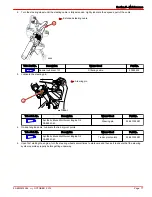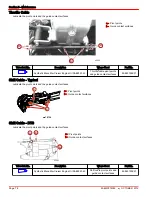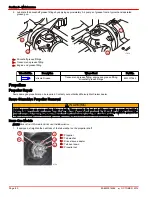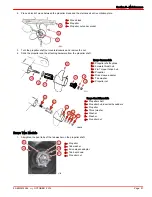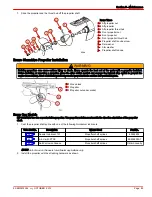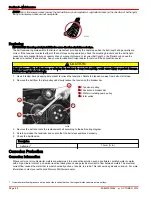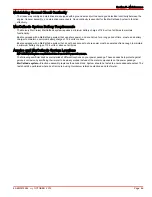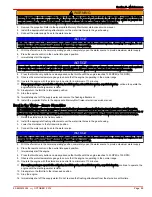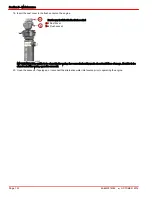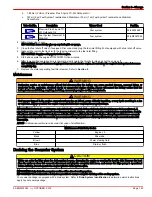
Section 5 - Maintenance
Page 88
90-8M0074352
eng
OCTOBER 2012
NOTE: Minor, transverse cracks (across the belt width) may be acceptable. Longitudinal cracks (in the direction of belt length)
that join transverse cracks are not acceptable.
21062
Replacing
IMPORTANT: If reusing a belt, install it in the same direction of rotation as before.
The belt tensioner operates within the limits of movement provided by the cast stops when the belt length and geometry are
correct. If the tensioner contacts either of the cast stops during operation, check the mounting brackets and the belt length.
Loose brackets, bracket failure, accessory drive component movement, incorrect belt length, or belt failure can cause the
tensioner to contact the cast stops. See your authorized MerCruiser dealer for service if these conditions exist.
!
CAUTION
Rapid release of the belt tensioner, or allowing the tensioner to snap back quickly, could cause injury or product damage.
Relieve the spring tension slowly.
1. Use a breaker bar and appropriate socket to relieve the tensioner. Rotate the tensioner away from belt until it stops.
2. Remove the belt from the idler pulley and slowly relieve the tension on the breaker bar.
a -
Tensioner pulley
b -
Socket and breaker bar
c -
Water circulating pump pulley
d -
Idler pulley
3. Remove the belt and route the replacement belt according to the belt routing diagram.
4. Carefully release the tensioner and ensure that the belt stays positioned properly.
5. Check the belt tension.
Description
Deflection
1.
13 mm (½ in.)
Corrosion Protection
Corrosion Information
Whenever two or more dissimilar metals are submerged in a conductive solution, such as saltwater, polluted water or water
with a high mineral content, a chemical reaction takes place causing electrical current to flow between metals. The electrical
current flow causes the metal that is most chemically active, or anodic, to erode. This is known as galvanic corrosion. For more
information contact your authorized Mercury MerCruiser dealer.
43546
a
b
c
d
1. Use moderate thumb pressure on the belt at the location that has the longest distance between two pulleys.




